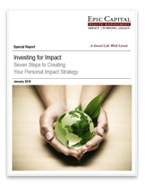College Funding Options
Jun 10, 2020
How can you cover your child’s future college funding needs? Saving early (and often) may be key for most families. Here are some college savings vehicles to consider.
529 college savings plans. Offered by states and some educational institutions, these plans allow you to save up to $15,000 per year for your child’s college costs without having to file an I.R.S. gift tax return. A married couple can contribute up to $30,000 per year. (An individual or couple’s annual contribution to a 529 plan cannot exceed the yearly gift tax exclusion set by the Internal Revenue Service.) You can even front-load a 529 plan with up to $75,000 in initial contributions per plan beneficiary – up to five years of gifts in one year – without triggering gift taxes.1,2
529 plans commonly feature equity investment options that you may use to try and grow your college savings. You can even participate in 529 plans offered by other states, which may be advantageous if your student wants to go to college in another part of the country. (More than 30 states offer some form of a tax deduction for 529 plan contributions.)1,2
Earnings from 529 plans are exempt from federal tax and generally exempt from state tax when withdrawn, so long as they are used to pay for qualified education expenses of the plan beneficiary. If your child doesn’t want to go to college, you can change the beneficiary to another child in your family. You can even roll over distributions from a 529 plan into another 529 plan established for the same beneficiary (or another family member) without tax consequences.1
Grandparents can start a 529 plan (or other college savings vehicle) just like parents can. In fact, anyone can set up a 529 plan on behalf of anyone. You can even establish one for yourself.1
These plans now have greater flexibility. Thanks to the federal tax reforms passed in 2017, up to $10,000 of 529 plan funds per year may now be used to pay qualified K-12 tuition costs.2,3
Coverdell ESAs. Single filers with modified adjusted gross incomes (MAGIs) of $95,000 or less and joint filers with MAGIs of $190,000 or less can pour up to $2,000 into these accounts annually, which typically offer more investment options than 529 plans. (Phaseouts apply above those MAGI levels.) Money saved and invested in a Coverdell ESA can be used for college or K-12 education expenses.3
Contributions to Coverdell ESAs aren’t tax deductible, but the accounts enjoy tax-deferred growth, and withdrawals are tax free, so long as they are used for qualified education expenses. Contributions may be made until the account beneficiary turns 18. The money must be withdrawn when the beneficiary turns 30, or taxes and penalties will occur. Money from a Coverdell ESA may even be rolled over into a 529 plan.3,4
UGMA & UTMA accounts. These all-purpose savings and investment accounts are often used to save for college funding. They take the form of a trust. When you put money in the trust, you are making an irrevocable gift to your child. You manage the trust assets until your child reaches the age when the trust terminates (i.e., adulthood). At that point, your child can use the UGMA or UTMA funds to pay for college; however, once that age is reached, your child can also use the money to pay for anything else.5
Whole life insurance. If you have a permanent life insurance policy with cash value, you can take a loan from (or even cash out of) the policy to meet college funding needs. Should you fail to repay the loan balance, obviously, the policy’s death benefit will be lower.6,7
Did you know that the value of a life insurance policy is not factored into a student’s financial aid calculation? If only that were true for college savings funds.6
Imagine your child graduating from college, debt free. With the right kind of college planning, that may happen. Talk to a financial professional today about these savings methods and others.
More Insights
Few terms in personal finance are as important, or used as frequently, as “risk.” Nevertheless, few terms are as imprecisely defined. Generally, when financial advisors or the media talk about investment risk, their focus is on the historical price volatility of the asset or investment under discussion.
As Americans get their grills and beach chairs ready for the July 4th holiday, the stock market and the weather across much of the country have both been on heaters. Stocks and bonds continue to effectively navigate a complex policy landscape shaped by evolving trade dynamics, geopolitical tensions, and fiscal stimulus. The market’s resilience in … Continue reading “Market Update – America Gets Record High Stock Prices for Its Birthday”
Birthdays may seem less important as you grow older. They may not offer the impact of watershed moments such as getting a driver’s license at 16 and voting at 18. But beginning at age 50, there are several key birthdays that can affect your tax situation, health-care eligibility, and retirement benefits.
During times like these when geopolitical headlines can be unsettling for investors, we at LPL Research like to remind ourselves of one of our key investing principles. Markets have always faced challenges —ranging from geopolitical conflicts and economic downturns to natural disasters, political upheaval and health crises. These events often trigger short-term volatility and shake … Continue reading “Why Long Term Investing Beats Selling in Volatile Times”
Are you concerned about the inheritance taxes your heirs may have to pay? Then you may want to consider creating charitable lead trusts.
Services
Epic Capital provides the following comprehensive financial planning and investment management services: Learn More >


 Top of Page
Top of Page











